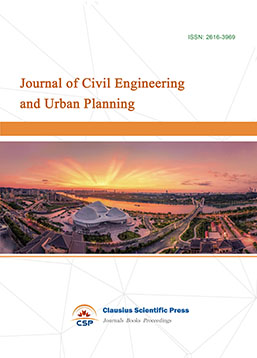Exploration of Living Space from the Perspective of Intergenerational Symbiosis
DOI: 10.23977/jsdgb.2023.010103 | Downloads: 46 | Views: 3046
Author(s)
Wenling Wang 1
Affiliation(s)
1 School of Architecture and City Planning, Kunming University of Science and Technology, Kunming, 650000, China
Corresponding Author
Wenling WangABSTRACT
With the increase of social population, intergenerational relationship has become a social issue. As a form of space, living space carries an important function of intergenerational communication. Under the perspective of "intergenerational symbiosis", this study takes the living space as the research object, using the methods of architectural typology and case study, divides the living space into "complete cohabitation", "semi- cohabitation" and " complete separation". This paper summarizes the spatial organization of each type and related practical experiences, with a view to providing reference and inspiration for the design of future living spaces.
KEYWORDS
Intergenerational symbiosis, Living space, Shared living, Spatial design, Shared spaceCITE THIS PAPER
Wenling Wang, Exploration of Living Space from the Perspective of Intergenerational Symbiosis. Journal of Sustainable Development and Green Buildings (2023) Vol. 1: 14-24. DOI: http://dx.doi.org/10.23977/jsdgb.2023.010103.
REFERENCES
[1] Office of the Leading Group of the Seventh National Census of the State Council. Major figures on 2020 population census of China, Beijing: China Statistics Press, 2021, 9.
[2] National Bureau of Statistics. 2021 China Statistical Yearbook, Beijing:China Statistics Press,2021.
[3] Zhang X. Research of city's sustainable development based on symbiosis, Northeast Agricultural University, 2004.
[4] Zhang Dongqing, Sun Chulun, Chen Yi. Preliminary Analysis on Cross-generational Co-living Space in Residential Buildings [J]. Housing Science. 2021,41(04):7-15.
[5] Li Zhenyu , Zhu Yichen. Towards a Sharing Architecture [J]. Architectural Journal .2017(12):60-65.
[6] Shi Lu, Lu Yu. Research on multi-generational co-housing design based on traditional Chinese residential architecture[J]. Art Work. 2019,(03):86-89.
[7] Homeshare International [EB/OL]. [2022-10-25]. https://homeshare.org/
[8] Li Liping. On the "one seal" dwelling and the architectural culture it embodies[J]. China Place Name. 2020,(04):52.
[9] Yang Yang, Qiang Mingli. An analysis of the form pattern of traditional wooden houses in Kunming[J]. Green Environmental Protection Building. 2021,(12):79-80.
[10] Jiang Zhenzhen, Zhai Hui, Lei Tihong. Building Shapes and Traditional Family Culture of "Yi Keyin" Traditional Vernacular Dwelling:Taking Kunming as an Example [J]. Huazhong Architecture.2016,34(07):135-138.
[11] Homeshare Korea [EB/OL]. [2022-10-25]. https://www.homesharekorea.com/
[12] GenerationenKult-Haus [EB/OL]. [2022-10-25]. https://www.geku-haus.de/
[13] Multi-age mixed communities, Copenhagen / C.F. Møller and Tredje Natur [EB/OL]. (2016-03-17) [2022-10-25]. https://www.gooood.cn/future-solund-by-c-f-moller-and-tredje-natur.htm
| Downloads: | 293 |
|---|---|
| Visits: | 9358 |
Sponsors, Associates, and Links

 Download as PDF
Download as PDF






